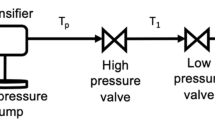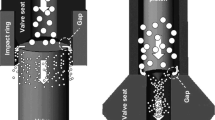Abstract
In the original and variants of the hurdle technology metaphor, factors affecting a food preservation process’s efficacy are represented by horizontally spaced athletic hurdles that the targeted microbes have to overcome or expire. But while the utility of combined preservation methods and exploiting synergism is not in doubt, there are issues with the hurdles metaphor itself, namely assignment of the same icon to factors of different categories, the lack of clear relationship between the hurdles’ heights, shape, and the distances between them and the actual antimicrobial effect. According to Troller (1983), a more suitable metaphor is a wall constructed from the vertically stacked obstacles whose total height represents the magnitude of the challenge to the microbes’ survival or sustained growth. His idea can be refined by adding a distinction between active lethal or growth suppressing agents, such as heat, ultra high pressure and chemical antimicrobials, and auxiliary non-lethal factors which only affect the former’s efficacy, such as pH, aW, and oxygen tension. In this revised metaphor, those of the first kind are the stacked obstacles forming the wall, and those of the second kind only affect their heights. Since microbial inactivation or growth suppression is manifested in a survival or growth curve, not a number, the role of kinetics, absent in the traditional metaphor, ought to be factored in too. This can be done, by defining the effective combined wall’s height in terms of the microbial population’s size reduction for inactivation, or its growth level for shelf life expiration.














Similar content being viewed by others
References
Barba FJ, Koubaa M, do Prado-Silva L, Orlien V, de Souza Sant’Ana A (2017) Mild processing applied to the inactivation of the main foodborne bacterial pathogens: a review. Trends Food Sci Technol 66:20–35
Cappato LP, Dias Martins AM, Ferreira EHR, Rosenthal A (2008) Effects of hurdle technology on Monascus ruber growth in green table olives: a response surface methodology approach Braz. J Food Microbiol 49:112–119
Chawla SP, Chander R (2004) Microbiological safety of shelf-stable meat products prepared by employing hurdle technology. Food Control 15:559–563
Corradini MG, Peleg M (2003) A model of microbial survival curves in water treated with a volatile disinfectant. J Appl Micorbiol 95:1268–1276
Coutinho de Oliviera TL, Ramos ALS, Ramos EM, Hilsdorf Piccoli R, Cristianin M (2015) Natural antimicrobials as additional hurdles to preservation of foods by high pressure processing. Trends Food Sci Technol 45(60):85
Da Silva MY, Alves Rosario DK, Flosi Paschoalin VM, Conte-Junior CA (2019) Salmonella enterica: a hidden risk for dry-cured meat consumption? Crit Rev Food Sci Nutr (In press - available on line)
Dai Y, McLandsborough LA, Weiss J, Peleg M (2010) Concentration and application order effects on sodium benzoate and eugenol mixtures on the growth inhibition of Saccharomyces cerevisiae and Zygosaccharomyces baili. J Food Sci 75:M482–M488
David JRD, Steenson LR, Davidson PM (2013) Expectations and applications of natural antimicrobials to foods: a guidance document for users, Suppliers, Research and Development, and Regulatory Agencies. Food Prot Trends 33:238–247
Gomez PL, Welti-Chanes J, Alzamora SM (2011) Hurdle technology in food processing. Annu Rev Food Sci Technol 2:447–465
Huang HW, Wu SJ, Lu JK, Shyu YT, Wang CY (2004) Current status and future trends of high-pressure processing in food industry. Food Control 72:1–8
Khan I, Tango CN, Miskeen S, Lee BH, Oh DH (2017) Hurdle technology: a novel approach for enhanced food quality and safety - a review. Food Control 73:1426–1444
Lammert A (undated) Fig. 8.9 in Processing Foods using Thermal Methods https://www.studocu.com/en/document/california-polytechnic-state-university-san-luis-obispo/introduction-to-food-science/lecture-notes/thermal-process-lecture-notes-week-6-day-2/3170081/view (Lecture notes)
Lee SY (2004) Microbial safety of pickled fruits and vegetables and hurdle technology. Internet J Food Safety 4:21–32
Leistner L (1994) Further developments in the utilization of hurdle technology for food preservation. J Food Eng 22:421–432
Leistner L (2000) Basic aspects of food preservation by hurdle technology. Int J Food Micobiol 55:181–186
Leistner L, Gorris LGM (1995) Food preservation by hurdle technology. Trends Food Sci Technol 6:41–45
Leistner L, Gould GW (2002) Hurdle technologies: combination treatments for food stability, safety and quality. York, Springer New
Manrique Y, Gibis M, Schmidt H, Weiss J (2017) Influence of application sequence and timing of eugunol and lauric alginate (LAE) on survival of spoilage organisms. Food Microbiol 64:210–218
Mukhopadhyay S, Gorris LGM (2014) Hurdle technology. In: Encyclopedia of food Micorbiology, 2nd edn, pp 221–227
Ngnitcho FPK, Khan I, Tango CN, Hussain MS, Oh DH (2017) Inactivation of bacterial pathogens on lettuce, sprouts, and spinach using hurdle technology. Innov Food Sci Emerg Technol 43:68–76
Peleg M (2000) Microbial survival curves - the reality of flat shoulders and absolute thermal death times. Food Res Int 33:531–538
Peleg M (2006) Advanced quantitative microbiology for food and biosystems: models for predicting growth and inactivation. CRC Press, Boca Raton
Peleg M, Corradini MG (2011) Microbial growth curves - what the models tell us and what they cannot. CRC Crit Rev Food Sci 51:917–945
Singh S, Shalini R (2006) Effect of hurdle technology in food preservation: a review. Crit Rev Food Sci Nutr 56:641–649
Troller JA (1983) Private communication, ISOPOW III, Beaune, France
van Boekel MAJS (2008) Kinetic modeling of food quality: a critical review. Compr Rev Food Sci Technol 7:144–158
van Boekel MAJS (2009) Kinetic modeling of reactions in foods. CRC Press, Boca Raton
Zhao W, Yang R, Shen X, Zhang S, Chen X (2013) Lethal and sublethal injury and kinetics of Escherichia coli, Listeria monocytogenes and Staphylococcus aureus in milk by pulsed electric fields. Food Control 32:6–12
Acknowledgments
The author thanks Mark D. Normand for programming the Wolfram Demonstration submission and taking care of its submission to the Wolfram Demonstrations Project.
Author information
Authors and Affiliations
Corresponding author
Additional information
Publisher’s Note
Springer Nature remains neutral with regard to jurisdictional claims in published maps and institutional affiliations.
Rights and permissions
About this article
Cite this article
Peleg, M. The Hurdle Technology Metaphor Revisited. Food Eng Rev 12, 309–320 (2020). https://doi.org/10.1007/s12393-020-09218-z
Received:
Accepted:
Published:
Issue Date:
DOI: https://doi.org/10.1007/s12393-020-09218-z




